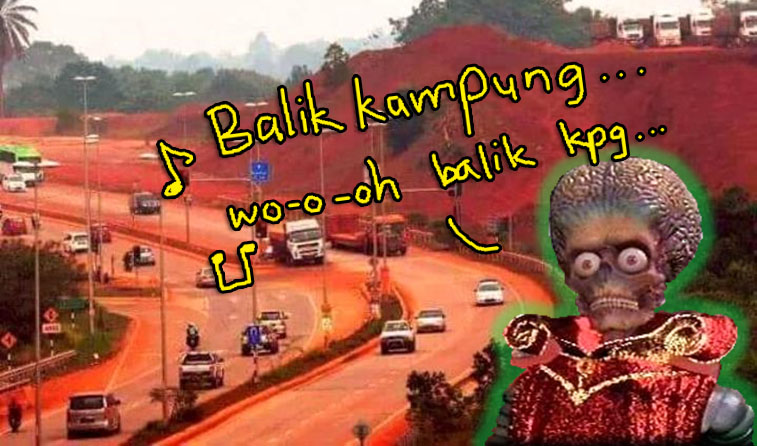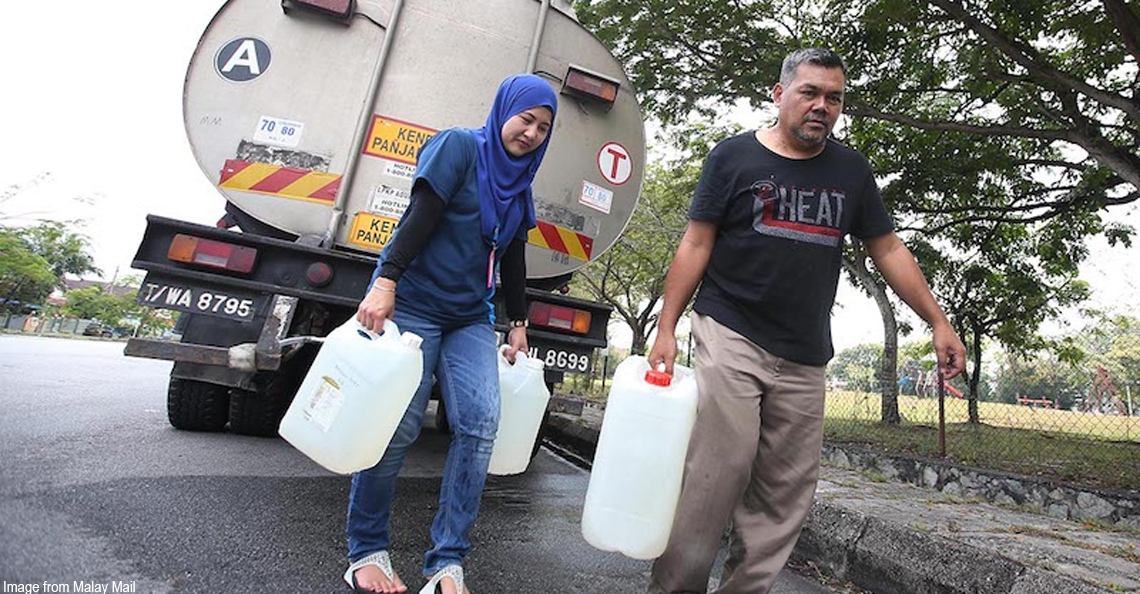Why is Kuantan turning all RED like Mars?! [UPDATE]
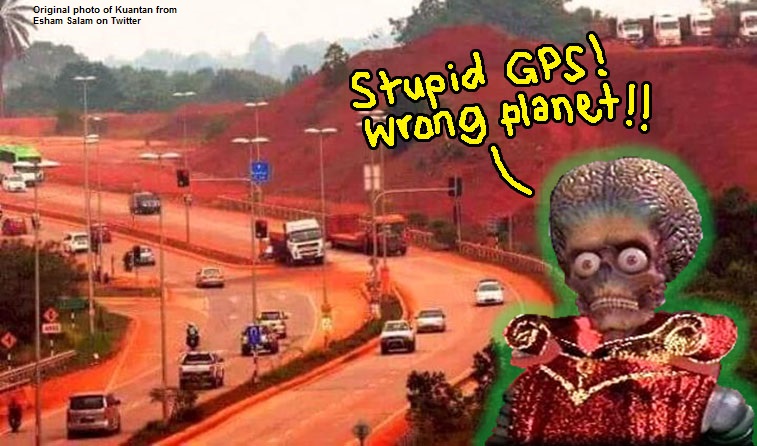
- 6.2KShares
- Facebook6.1K
- Twitter4
- LinkedIn3
- Email3
- WhatsApp15
*Artikel ni boleh baca dalam bahasa Melayu, tekan sini untuk ke SOSCILI
UPDATE: Today (2 Nov), 2,448 Kuantanites signed a petition for export permits for bauxite to be suspended immediately. The issue will be debated in Dewan Rakyat on 25 Nov, according to Kuantan MP Fuziah Salleh.
Something freaky is happening in Kuantan. The town is turning RED…
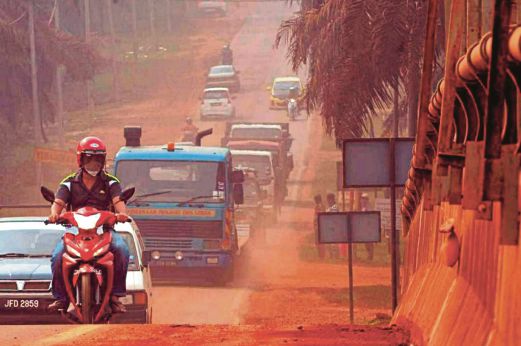
The sea is turning RED…
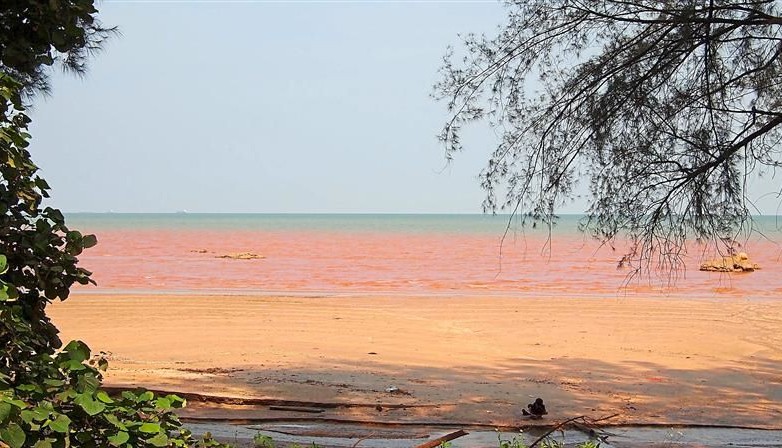
What’s going on!? Is Syamsul Yusof (director of KL Gangster) directing apocalyptic dystopian movies now? No, but the real story is much more serious. Kuantan is becoming a HOT SPOT for bauxite mining. We found this hilarious comment to our article and we just had to share it!

Watch this video. Shocker comes at 0:45.
OMG that’s scary. Why is Malaysia suddenly mining so much bauxite? Is it dangerous to people’s health and the environment? We had so many questions and we’ll try to answer them here. Hopefully it’ll shed some light on the issue – especially for Malaysians who live outside Kuantan, so that they know what people in this city are going through. But first…
What is bauxite?
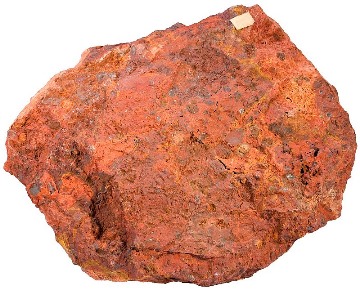
Bauxite is the world’s MAIN source of aluminium – the metal used to make drink cans, foil wrapper, your MacBook Pro’s casing and other stuff. After iron, aluminium is the second-most used metal in the world and the largest producer of it, is Australia.
It’s a billion dollar industry that got 600 Felda Kuantan settlers super-excited when they first discovered there was bauxite under their feet. When mining companies began approaching them with an offer up to RM1.8 million each, they all thought they finally hit the jackpot. NO WONDER people in Kuantan want to mine it.
Mines have been springing up everywhere in Malaysia
We’ve always known that Malaysia had a rich history in TIN mining. Heck, we can even recall learning it during Sejarah class in school. But… bauxite? If this is your first time hearing about this bauxite issue, well, join da club. The reason is because Malaysia quite recently became a big player in bauxite.

In Jan 2013, Indonesia (world’s 3rd largest supplier of bauxite) banned all exports of raw ores, leaving a gap in the China market. So Malaysia stepped in to FILL that gap.
“Clearly domestic [China] bauxite production is growing strongly… [plus] all the countries that are contributing a little bit more this year. But now there is this dark horse [Malaysia] emerging, which I don’t think many foresaw.” – Paul Adkins, AZ China (Chinese consulting company on raw materials), Reuters
Wah, why say until so drama? Then we found the numbers and realised this guy’s not kidding: From producing 2,040 tons in 2004, we jumped to 208,770 tons in 2013, to 962,799 metric tons in 2014! This data came from the Minerals and Geoscience Department. To really get a gist of it, check out this graph:
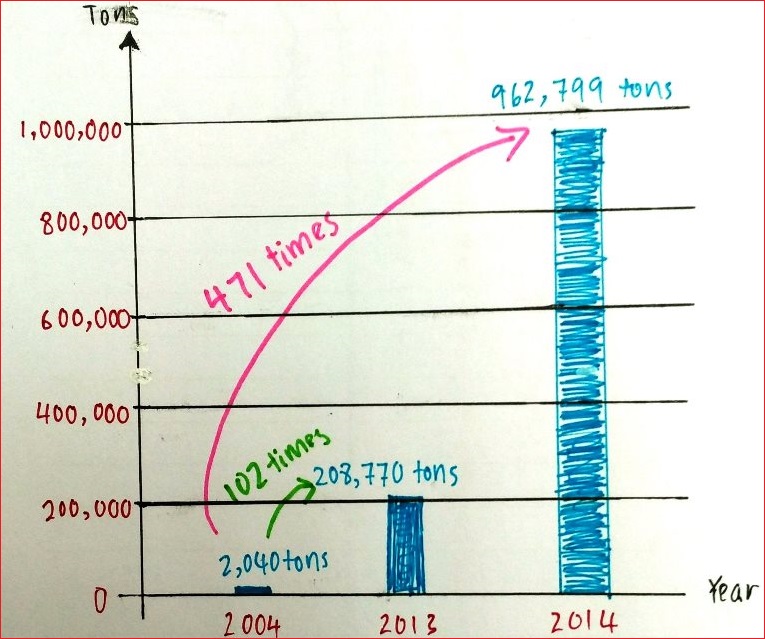
Whoa, SOOO much bauxite, no wonder la paint the town red. Literally.
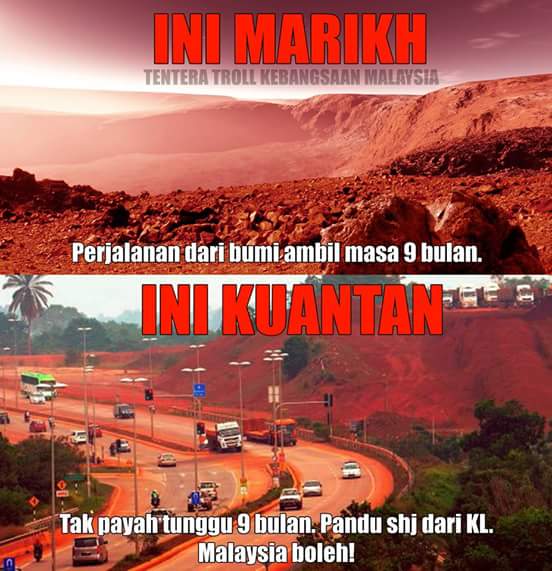
But there’s MORE alarming news… Some of you may not have been born yet in the 70s, but in that Flower Power era, Malaysia was like the godfather of the mining industry. It wasn’t until the 80s when the tin industry collapsed, that mining activities slowed down altogether. Now apparently, Malaysia is planning to REVIVE its former glory.
Since experts estimate we have roughly RM336 bil worth of untapped minerals underground, this could turn unknowing landowners into billionaires! There are already 13 tin, 102 iron ore and 15 gold mines (as of June 2013). TOTAL: 130 mines. Spread out across Perak, Kelantan, Terengganu, Pahang and Johor, they’re drawing cash-rich foreign companies from China to Australia like flies to a honeypot. Sound familiar? It’s like Lynas all over again. But note that this bauxite issue is different from Lynas.
Ok wat, got foreign cash coming in… so what’s the problem?
Coz bauxite is very BAD for the environment
As the video up there suggests, bauxite pollution looks like something that would really piss Captain Planet off. But HOW does it harm the environment, particularly in Kuantan?
1. Deforestation (but not exactly)
One of the arguments against bauxite mining is deforestation. But in Kuantan, the areas that were cleared at Felda Bukit Goh were palm oil plantations, not NATURAL forests. So technically, the area had already been “impacted” in the first place.

Although in our previous article, we wrote that palm oil trees are not as good for the environment as forest trees –TREES (in general) reduce the risk of soil erosion. But after plantation settlers discovered they had untapped bauxite, they were super quick to dig up their trees… leading to soil erosion… leading to…
2. Water pollution

Ever since bauxite mining became rampant, Kuantanites complained of banjir lumpur (English: mudslides) every time it rained (because soil erosion larrr) and the sea near Kuantan Port will change colour.
“The sea gets so red sometimes that it is like a sea of blood.” – Abdul Razak Ngah, Kampung Selamat resident, The Star
So is the ‘red sea’ dangerous to the environment? NST collected samples of water from Sungai Pengorak and Pantai Pengorak and sent them to ES Techventure (a KL-based environmental consulting company) for an independent lab test. Though the Pahang Public Amenities and Environment Committee assured people it wasn’t harmful to marine life, NST’s results show otherwise:
“There is a serious risk to marine life, too. The red dust will clog the gills of fish, causing them to suffocate and die.” – Prof. Dr. Che Abd Rahim Mohd, Geochemistry & Marine Radiochemistry expert from University Kebangsaan Malaysia (UKM), on NST
But that’s not the WORST thing he said. The professor compared the results to standards set by the World Nuclear Association and confirmed the water was contaminated with heavy metals, and more shockingly they also detected early stages of radiation. Ra-dia-tion?? Yes, ra-dia-tion! (More on this later).
Additionally, Rahim said the nutrient-rich content would trigger a bloom of harmful microalgae, causing marine life that eat the toxic stuff to be contaminated too.
3. Air pollution
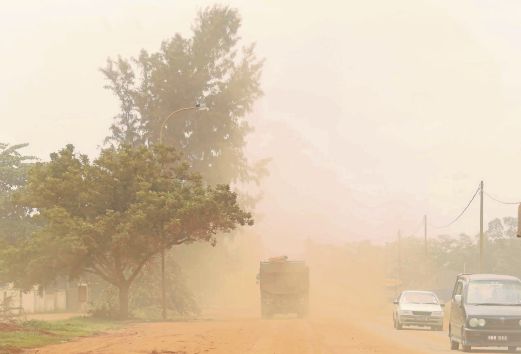
Kuantanites also complained that red dust blows everywhere when the transporting lorries drive by. Another villager from Kg. Selamat said it has WORSENED her asthma and made her skin ITCH:
“I have to go to the clinic at least three times a month to get my health checked. It was not always like this. The ore transportation to the port only intensified over the past year.” – Faidah Jusoh, The Star
Each time a lorry passes by, Faidah has to cover the food at her roadside stall. Meanwhile, her friend Siti Sandora said house cleaning has never been more demanding:
“I have to wipe my house furniture and mop the floor several times a day.” – Siti Sandora, The Star
Walao why so teruk? Is it the same for every bauxite mining site in the world? We did a quick search on Google:
- In Texas, US, rusty red dust drifts from metal plants to residential areas, sometimes creating hazy storms, coating lawns, trucks and traffic lights.
- In Jamaica, residents of several districts near the Alpart bauxite refinery had wheezing children, water contaminated, crops are dying, and one man even claimed he became impotent thanks to bauxite pollution.
- In Linden, Guyana, pollution reached residents too and pharmacies saw a surge in cold medicine sales after that.
In fact all over the world, ALL types of mineral mining faces protests no matter how it’s regulated. It’s dust lah, how you gonna contain it? It was reported as of 17 Aug 2015, there were over 1,500 ongoing conflicts about spills, pollution, relocations, waste, floods, ill-health and more.
—
Speaking of ill-health, let’s talk about the radioactive part…
So if people touch radioactive bauxite, they become like Spiderman?
Ok ok, we know this is starting to sound like some sci-fi horror, but bauxite has uranium and thorium – both HIGHLY radioactive. Then why isn’t the media scrambling to cover this and why nobody protest like they did for Lynas? Well, maybe unlike the Chernobyl disaster or Hiroshima, it’s not one of those huge blow ups that people would immediately notice? You could say Kuantan bauxite is more like a slow and silent killer.
We tried to find out how bauxite affects the human body if people come into contact with it. Here are 2 ways:
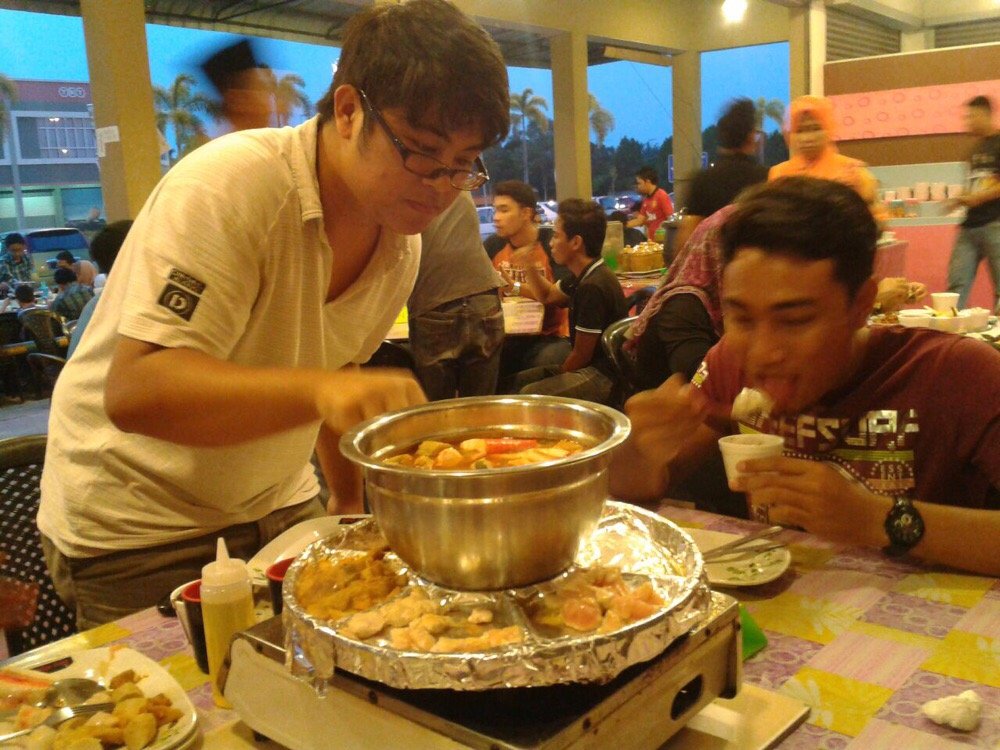
1. If you eat it
NST did more tests on fish samples from the Gebeng coastal area and found they were heavily contaminated with toxic chemicals and heavy metals. But the MOST disturbing reading they got was the level of arsenic. The Food Regulation 1985 states that the permissible level in fish is 1mg/kg… samples showed an average of 101.5mg/kg!
Environmental health expert Prof. Dr. Jamal Hisham Hashim explained that it can cause: cancer, lung embolism, respiratory failure, birth defects, asthma and chronic bronchitis, heart disorders and allergic reactions. More effects of arsenic poisoning here.
“As long as the reading for heavy metals in the areas remains above the permissible level, fish and other seafood sourced from the areas cannot be sold or consumed.” – Prof. Dr. Jamal, NST

2. If you breathe it in
“As we breathe, residues from the bauxite will fill our lungs and create blockage, and can lead to cancer,” explained Prof. Dr. Che Abd Rahim in NST. You know what else is scary about radiation poisoning? The professor added that you won’t even know you got it until you see the effects on your skin, respiratory system and genes. By then it’s too late. OMG that’s like asbestos, the silent killer!
A friend of CILISOS’ went to Kuantan quite recently and described how bad it was:
“Made a mistake of not wearing my jacket and wore a white shirt. By the time I got back, I was red. Literally. Definitely not going to ride through there again.” – Ong Wooi Chong, 30, Engineer
– – –
But radioactive effects are a very REAL danger that has harmed Malaysians in the past. Did you guys know, in 1979 there was a case in Bukit Merah, Ipoh? Asian Rare Earth owned by Mitsubishi Chemical was opened to extract yttrium (also radioactive), but within a few years, villagers began to develop leukaemia. Newborns had physical defects and 40% of children suffered from lymph node diseases, turbinate congestion and rhinitis. 7 leukaemia victims have since died.
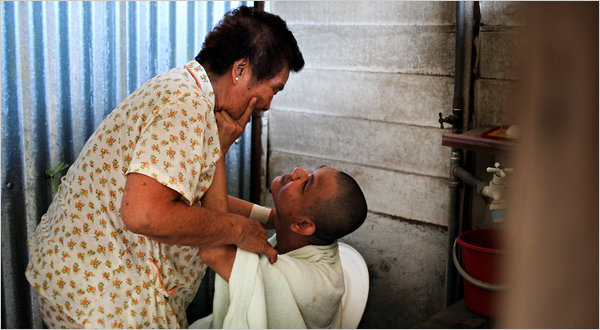
Equally heartbreaking was the townspeople’s fight to stop the plant. They fought for more than 2 decades, going up against big corporations and powerful state authorities. Only muuuuch later in 2003 did Mitsubishi Chemical finally shut down the plant. The work to decontaminate the area is still going on, estimating to cost RM300 mil. The New York Times called it “the largest radiation cleanup yet in the rare earth industry.”
How could we have allowed something like that to happen? More importantly, how do we make sure it NEVER happens again?
Here’s where strict regulation comes in
Yes, REGULATIONS… boring *yawn*, we know. But when it comes to handling radioactive material, cannot play, play! The problem with Kuantan bauxite miners is they don’t follow proper regulations, that’s why Kuantan is so badly polluted.
“Where are we supposed to go? Our village is called ‘Kampung Selamat’ but it is not safe for us – health-wise.” – Faidah, The Star
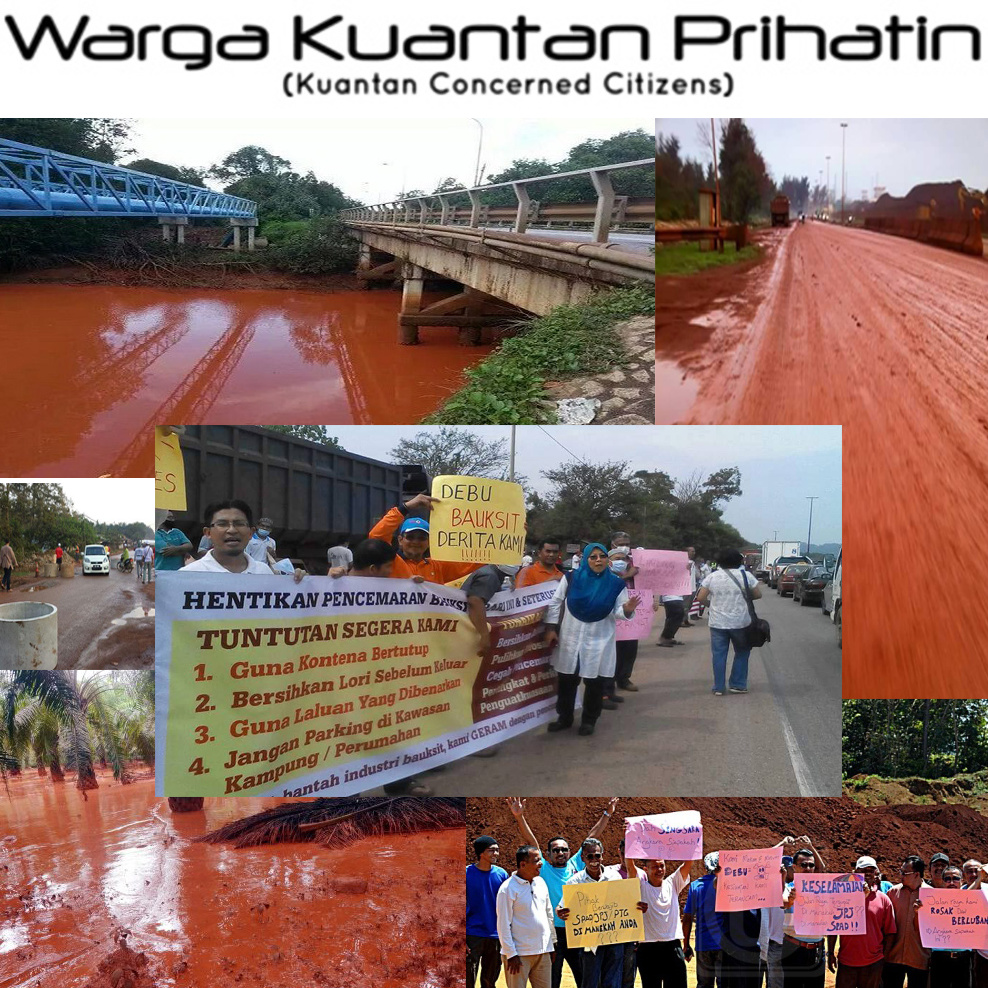
Why do people protest against Lynas or the bauxite mines? To really understand their concerns, we have to look to ghost of 1979 Bukit Merah. Surely we don’t want this part of Malaysian history to repeat itself…
Before Kuantanites voiced up, the authorities didn’t highlight the mining publicly. Despite the benefits of striking bauxite riches, people felt that so many important aspects of the growing mining industry lacked transparency. True enough, when The Star checked with the Minerals and Geoscience Dept, they got very little information. That’s why it’s important to have a concerned public, an INVOLVED public, that raises questions.
So good job, Kuantanites who raised a red flag on this. In The Star’s report, Beserah assemblyman Andansura Rabu received complaints from 3 villages, involving 4,000 people. While bauxite mining shouldn’t be outrightly banned coz it’s a source of income, he said operators MUST obey regulations. Ultimately, regulations will make things a lot safer for Kuantan folk.

Thankfully, the authorities LISTENED! They removed 34 contractors’ licences to stop rampant mining and pollution, leaving only 11 legit contractors allowed to continue mining. They also ordered miners to use only one road, Jalan Gebeng-Bypass, to transport bauxite to the port. As of 8 Aug, people noticed the number of transporting lorries drop a lot. Not only that, Opposition and BN reps are trying to put aside their differences to work out a solution.
Hey, even ordinary Malaysians can do something about this. RECYCLE! Did you know, recycling 1 ton of aluminium saves up to 8 tons of bauxite? The amount of energy saved reaches 14,000 kWh – that’s enough to power a Malaysian house for about 4 years, 7 months on average! Recycling also uses 95% LESS energy than producing new aluminium, so that means for every new can made, the same amount of energy can make 20 recycled cans.
Aiyo, wait for what summore? Let’s RECYCLE yo! What better timing, since a few states, including Pahang, are gonna enforce trash separation by 1 Sept.
- 6.2KShares
- Facebook6.1K
- Twitter4
- LinkedIn3
- Email3
- WhatsApp15

